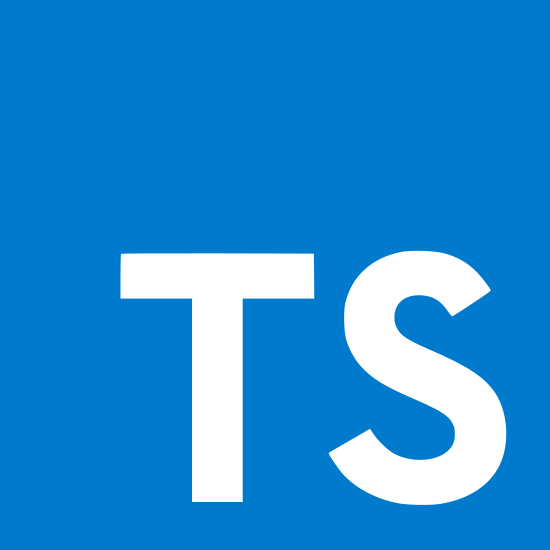Build Recap Session about Whats New in TypeScript
21 June 2017 - TypeScript, Node.js
Introduction
Today, I will do a session about TypeScript at a //Build2017 Recap event at Microsoft Vienna. In this blog post I share my samples and important links.
The goal of my talk is to highlight some important features that came with TypeScript 2.x. Instead of bullet points on slides I will use an end-to-end sample demonstrating the language enhancements.
Recording
I recorded the session and it has been published on Channel9:
Sample
Library
This library will be used by the backend (RESTful web api) and the web front end. Note that it does not follow all best practices for reusable NPM packages. It contains only minimal infrastructure because the main target is talking about new TypeScript features, not demonstrating how to build perfect NPM packages.
-
Create folder for library called ‘product-lib’. Open folder in Visual Studio Code.
- Open integrated terminal in VSCode
- Speak about using Bash on Ubuntu on Windows in VSCode (
"terminal.integrated.shell.windows": "\\WINDOWS\\sysnative\\bash.exe"in user settings)
- Speak about using Bash on Ubuntu on Windows in VSCode (
- Initialize Node app (describe each step)
npm initnpm install --save-dev typescript rimraf cpx./node_modules/.bin/tsc --init(talk about new TypeScript 2.3 feature: Enhancedtsc --initoutput)- Changes to
tsconfig.jsontargettoes5moduletoumd(talk about new TypeScript 2.0 feature: UMD support)outDirto./distsourceMaptotruedeclarationtotrue
- Add build scripts to
package.json:
...
"scripts": {
"clean": "rimraf dist",
"build": "tsc && cpx package.json ./dist",
"rebuild": "npm run clean && npm run build"
},
...
- Add
product-lib.tsas follows:
export interface IExternalProduct {
pid: number;
type: 'e';
supplier: string;
extCode: string
price: number;
}
export interface IInternalProduct {
pid: number;
type: 'i';
intCode: string;
costs: number;
}
-
Build library with
npm run rebuildand show generated code. -
Add
"main": "./product-lib.js", "types": "./product-lib.d.ts"topackage.jsonand rebuild library again.
Backend
-
Create folder for web api backend called
web-api. Open folder in Visual Studio Code. - Initialize Node app (describe each step)
npm initnpm install --save express body-parser cors mongodb applicationinsightsnpm install --save-dev typescript rimraf cpx./node_modules/.bin/tsc --init- Changes to
tsconfig.jsontargettoes2017(talk about new TypeScript 2.1 feature: Support for targetsES2016andES2017)outDirto./distsourceMaptotruemoduleResolutiontonode
- Add typings with
npm install --save-dev @types/express @types/body-parser @types/cors @types/mongodband speak about new TypeScript 2.0 feature improved declaration file acquisition- Use Application Insights to speak about packages written in TypeScript containing declaration files out of the box.
-
Add
product-libwithnpm install --save ../product-lib/dist - Add build scripts to
package.json:
...
"scripts": {
"clean": "rimraf dist",
"build": "tsc && cpx package.json ./dist",
"rebuild": "npm run clean && npm run build",
"start": "node ./dist/server.js"
},
...
- Add
middleware.tsas follows:
import * as express from 'express';
import * as mongodb from 'mongodb';
import {IExternalProduct, IInternalProduct} from 'product-lib';
export function addDb(mongoUrl: string, app: express.Express, cb: () => void) {
mongodb.MongoClient.connect(mongoUrl, (err, db) => {
(<any>app).db = db;
cb();
});
}
function getDb(req: express.Request): mongodb.Db {
return ((<any>(req.app)).db);
}
export async function addProduct(
req: express.Request, res: express.Response, next: express.NextFunction) {
// Use the following line to speak about TypeScript 2.0 feature
// discriminated union types
// (https://github.com/Microsoft/TypeScript/pull/9163)
const prod: (IExternalProduct|IInternalProduct) = req.body;
if (prod.type === 'i') {
if (prod.costs > 1000) {
res.status(400).send('Products with costs > 1000 are not supported');
return;
}
} else {
if (!prod.extCode) {
res.status(400).send('External product code is missing');
return;
}
}
// Use the following line to speak about async/await
// (try target ES2016 and ES2017 and compare js code)
await getDb(req).collection('products').insertOne(prod);
res.status(201).send();
}
export async function getProducts(
req: express.Request, res: express.Response, next: express.NextFunction) {
const result = await getDb(req)
.collection('products')
.find()
.toArray();
if (result.length === 0) {
res.status(404).send();
} else {
res.status(200).send(result);
}
}
-
Speak about new TypeScript 2.0 feature: Discriminated union types
-
Show generated code for
target=es2016andtarget=es2017 -
Create a CosmosDB with MongoDB API in Azure. Speak about CosmosDB.
-
Create an Application Insights instance in Azure. Speak about Application Insights.
-
Add
server.tsas follows (note that you have to change the connection string and the AI GUID):
import * as bodyParser from 'body-parser';
import * as cors from 'cors';
import * as express from 'express';
import {addDb, addProduct, getProducts} from './middleware';
import appinsights = require('applicationinsights');
appinsights.setup('04ea2b0d-...').start();
var app = express();
app.use(cors());
app.use(bodyParser.json());
app.post('/api/products', addProduct);
app.get('/api/products', getProducts);
// Start express server
var port: number = process.env.port || 1337;
addDb(
'mongodb://user:password@typescript-demo.documents.azure.com:10255/?ssl=true&replicaSet=globaldb',
app, () => {
app.listen(port, () => {
console.log(`Server is listening on port ${port}`);
});
});
-
Build backend with
npm run build -
Run backend with
npm start -
Show API in action with the following requests (uses VSCode REST Client)
// The following request will fail because extCode is missing
POST http://localhost:1337/api/products
Content-Type: application/json
{"pid":1,"type":"e","supplier":"Acme corp","price": 99}
// The following request will succeed and add data
POST http://localhost:1337/api/products
Content-Type: application/json
{"pid":1,"type":"e","supplier":"Acme corp","price": 99, "extCode":"P001"}
// The following request will succeed and add data
POST http://localhost:1337/api/products
Content-Type: application/json
{"pid":2,"type":"i","intCode":"0088001155","costs":100}
// Get inserted products
GET http://localhost:1337/api/products
Front-End
-
Create folder for frontend called
ui. Open folder in Visual Studio Code. - Initialize Node app (describe each step)
npm initnpm install --save jquerynpm install --save-dev typescript webpack webpack-dev-server css-loader html-webpack-plugin style-loader ts-loader./node_modules/.bin/tsc --init- Changes to
tsconfig.jsonmoduletocommonjstargettoes5sourceMaptotruemoduleResolutiontonodelibto["dom", "es2015"]
-
Add typings with
npm install --save-dev @types/jquery -
Add
product-libwithnpm install --save ../product-lib/dist - Add build scripts to
package.json:
...
"scripts": {
"build": "webpack",
"start": "webpack-dev-server"
},
...
- Add
webpack.config.jsas follows and speak about webpack/TypeScript integration:
var HtmlWebpackPlugin = require('html-webpack-plugin');
module.exports = {
entry: {
scripts: './index.ts',
styles: './index.css'
},
output: {
filename: '[name].js',
path: __dirname + "/dist"
},
module: {
rules: [
{
test: /\.ts$/,
loader: 'ts-loader',
exclude: /node_modules/,
},
{
test: /\.css$/,
loader: 'style-loader!css-loader',
exclude: /node_modules/,
}
]
},
resolve: {
extensions: [".ts", ".js"]
},
plugins: [
new HtmlWebpackPlugin({
filename: "index.html",
template: "index.html",
inject: "head"
})
]
};
- Add
index.htmlas follows:
<!DOCTYPE html>
<head>
<title>TypeScript Demo</title>
<script type="text/javascript">
var appInsights = window.appInsights || function (config) {
function i(config) { t[config] = function () { var i = arguments; t.queue.push(function () { t[config].apply(t, i) }) } } var t = { config: config }, u = document, e = window, o = "script", s = "AuthenticatedUserContext", h = "start", c = "stop", l = "Track", a = l + "Event", v = l + "Page", y = u.createElement(o), r, f; y.src = config.url || "https://az416426.vo.msecnd.net/scripts/a/ai.0.js"; u.getElementsByTagName(o)[0].parentNode.appendChild(y); try { t.cookie = u.cookie } catch (p) { } for (t.queue = [], t.version = "1.0", r = ["Event", "Exception", "Metric", "PageView", "Trace", "Dependency"]; r.length;)i("track" + r.pop()); return i("set" + s), i("clear" + s), i(h + a), i(c + a), i(h + v), i(c + v), i("flush"), config.disableExceptionTracking || (r = "onerror", i("_" + r), f = e[r], e[r] = function (config, i, u, e, o) { var s = f && f(config, i, u, e, o); return s !== !0 && t["_" + r](config, i, u, e, o), s }), t
}({
instrumentationKey: "04ea2b0d-..."
});
window.appInsights = appInsights;
appInsights.trackPageView();
</script>
</head>
<body>
<h1>Products</h1>
<h2>Internal Products</h2>
<ul id="internal"></ul>
<h2>External Products</h2>
<ul id="external"></ul>
</body>
</html>
- Add
index.cssas follows:
body {
font-family: Arial, Helvetica, sans-serif;
}
- Add
index.tsas follows. Speak about async/await with ES5.
import $ = require('jquery');
import {IExternalProduct, IInternalProduct} from 'product-lib';
$(async () => {
let result: (IExternalProduct | IInternalProduct)[];
result = await $.get("http://localhost:1337/api/products").promise();
const internal = $('#internal');
const external = $('#external');
result.forEach(p => {
switch(p.type)
{
case 'i':
internal.append(`<li>${p.intCode}</li>`);
break;
case 'e':
external.append(`<li>${p.extCode}</li>`);
break;
}
});
});
-
Build frontend with
npm run build -
Run frontend with
npm start
Have fun!




